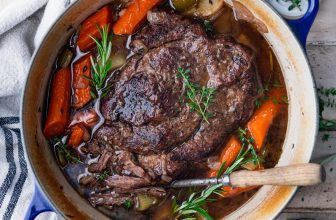Calories in Slice of Vegetable Pizza

Calories in Slice of Vegetable Pizza. A slice of vegetable pizza typically contains around 200-300 calories. Vegetable pizza is a popular choice among health-conscious individuals, as it offers a combination of delicious flavors and nutritious ingredients.
Packed with a variety of colorful vegetables such as bell peppers, onions, mushrooms, and tomatoes, this pizza provides a satisfying and guilt-free meal option. The calorie content of a slice of vegetable pizza can vary depending on factors such as the size of the slice, the thickness of the crust, and the amount of cheese and toppings used.
By opting for a thin crust and limiting the amount of cheese, you can enjoy a tasty slice of vegetable pizza without compromising your calorie intake. In addition to being a delicious treat, vegetable pizza also offers essential vitamins, minerals, and fiber that contribute to a healthy diet.

Introduction To Calorie Counting And Pizza
Vegetable pizza is a popular choice for calorie-conscious individuals. Pizza’s calorie content varies based on toppings and crust type. Despite the perception that pizza is unhealthy, vegetable pizza can be a nutritious option. When opting for vegetable pizza, consider portion sizes and toppings to manage calorie intake.
What Makes Vegetable Pizza A Healthier Option
A slice of vegetable pizza is a healthier option due to its lower calorie content and the nutritional benefits of the vegetables. When compared to other pizza varieties, the vegetable pizza stands out for its lower fat and higher fiber content. The abundance of vegetables on a slice provides essential vitamins, minerals, and antioxidants, contributing to a well-rounded meal. The colorful array of vegetables not only enhances the visual appeal of the pizza but also adds a variety of flavors and textures. By choosing vegetable pizza, individuals can enjoy a satisfying meal while ensuring they consume vital nutrients.
Analyzing A Slice: Caloric Content Breakdown
Delving into the caloric breakdown of a slice of vegetable pizza reveals a balanced nutritional profile. With an average of 200-300 calories, this slice provides a mix of carbohydrates, protein, and fiber, making it a satisfying and relatively healthy choice for a meal or snack.
| Ingredients | Caloric Values |
|---|---|
| 1 Slice of Vegetable Pizza (1/8 of 12″ pizza) | 140-300 calories |
| Tomato Sauce | 20-30 calories |
| Cheese (Mozzarella or Parmesan) | 70-100 calories |
| Vegetables (Onions, Peppers, Mushrooms, etc.) | 5-15 calories |
| Pizza Crust | 50-100 calories |
The caloric content of a slice of vegetable pizza can vary depending on the ingredients used and the size and thickness of the slice. A typical slice of vegetable pizza, which is 1/8 of a 12″ pizza, can contain anywhere from 140 to 300 calories. The tomato sauce typically contains 20 to 30 calories, while the cheese (either mozzarella or parmesan) can contribute 70 to 100 calories. The vegetables used, such as onions, peppers, and mushrooms, usually add only 5 to 15 calories. The pizza crust can range from 50 to 100 calories. It’s important to note that the size and thickness of the slice can greatly impact the caloric content.

The Role Of Cheese And Sauces
Explore the impact of cheese and sauces on calorie content in a slice of vegetable pizza. Discover how these toppings can significantly affect the overall nutritional value of your favorite pie.
| Cheese Varieties and Caloric Differences | Sauce Selections and Their Impact |
| Various cheeses on pizza have different calorie counts. | Sauces used can significantly affect the overall calorie content. |
| Opt for lower-fat cheese options to reduce calorie intake. | Choose tomato-based sauces over creamy ones for fewer calories. |
Crust Considerations
When comparing thin crust and thick crust vegetable pizza, the calorie count varies significantly. A standard slice of thin crust vegetable pizza contains fewer calories than its thick crust counterpart. However, alternative crust options, such as cauliflower crust or whole wheat crust, offer lower calorie counts than traditional crusts.

Toppings: Choosing Wisely
When it comes to selecting toppings for your vegetable pizza, it’s important to choose wisely to keep the calorie count in check. Avoid caloric-dense toppings such as extra cheese, sausage, and pepperoni as they can add up to 100 calories per slice. Opt for nutrient-rich toppings such as bell peppers, onions, mushrooms, and spinach for a balanced diet. These toppings not only add flavor but also provide vitamins and minerals essential for a healthy body.
| Toppings | Calories per slice |
|---|---|
| Extra cheese | 50 |
| Sausage | 70 |
| Pepperoni | 80 |
Choose a combination of nutrient-rich toppings for a flavorful and healthy pizza. Bell peppers, onions, mushrooms, and spinach are low in calories and high in vitamins and minerals. They not only add texture and color to your pizza but also provide essential nutrients that your body needs. So, next time you order a slice of vegetable pizza, choose wisely and enjoy a delicious and nutritious meal.
Portion Control And Its Importance
A slice of vegetable pizza contains around 200-300 calories. Understanding serving size helps manage portions effectively. To control portions, divide the pizza into smaller slices. Eating slowly and savoring each bite can prevent overeating.
Incorporating Vegetable Pizza Into A Diet Plan
Incorporating vegetable pizza into a diet plan can be a delicious way to add variety while still watching your calorie intake. A slice of vegetable pizza typically contains fewer calories than meat toppings, making it a healthier option. Plus, the vegetables provide important nutrients your body needs to function properly.
| When enjoying vegetable pizza, choose whole wheat crust. | Opt for light cheese and load up on colorful veggies. |
| Experiment with unique toppings like arugula or grilled eggplant. | Substitute traditional pizza sauce with homemade marinara. |
Conclusion: Mindful Pizza Consumption
Opt for mindful pizza consumption by being aware of the calorie content in a slice of vegetable pizza. Choose smaller portions and savor each bite to control calorie intake while still enjoying this delicious dish. Balancing pizza consumption with a healthy lifestyle is key to mindful eating.
| Vegetable Pizza Toppings | Calories per Slice |
|---|---|
| Mushrooms, Onions, Peppers | 120 |
| Spinach, Tomatoes, Olives | 130 |
| Broccoli, Cauliflower, Zucchini | 140 |
Eating pizza doesn’t have to mean sacrificing your healthy eating habits. By choosing vegetable toppings, you can keep your calorie intake in check while still enjoying a delicious slice of pizza. The table above shows the calorie count for different vegetable pizza toppings. To further encourage mindful pizza consumption, it’s important to be aware of portion sizes and resist the urge to overindulge. Pairing your pizza with a side salad or veggie sticks can also help increase your daily vegetable intake. By making small changes in your pizza choices and eating habits, you can still enjoy this beloved food without compromising your health goals.
Frequently Asked Questions
How Many Calories Are In 2 Slices Of Veg Pizza?
Two slices of veg pizza typically contain around 500-600 calories, depending on the toppings and crust.
How Many Calories Are In 1 Slice Of Veggie Pizza?
One slice of veggie pizza typically contains around 200-250 calories.
How Many Calories Are In A Typical Slice Of Pizza?
A typical slice of pizza contains around 285-350 calories, depending on the toppings and size.
Is A Vegetable Pizza Healthy?
Yes, a vegetable pizza can be a healthy option. It contains nutritious vegetables that provide essential vitamins and minerals. However, it’s important to consider the crust and toppings. Opt for a whole wheat crust and load up on fresh veggies while keeping the cheese and processed meats to a minimum.
Conclusion
Understanding the calorie content of a slice of vegetable pizza is crucial for making informed dietary choices. By opting for healthier pizza toppings and moderating portion sizes, individuals can enjoy this popular dish while maintaining a balanced diet. With awareness and mindful eating, pizza can still be a part of a healthy lifestyle.






